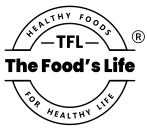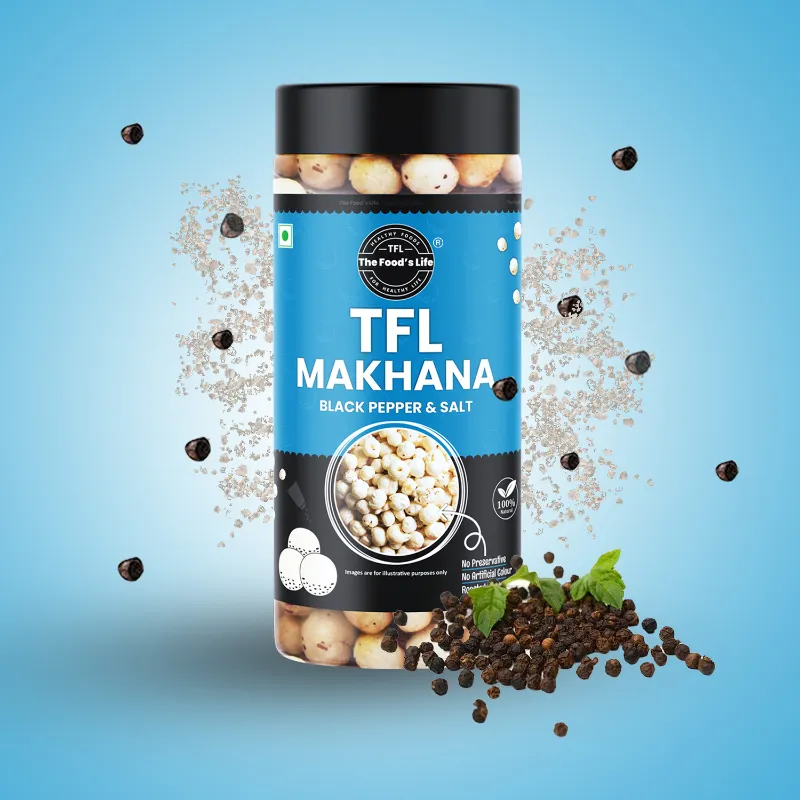Incorporating healthy snacks into our diet can boost energy, satisfy cravings, and contribute to overall wellness. However, just because a snack is labeled as “healthy” doesn’t mean we can eat it in unlimited quantities without consequences. Portion control plays a critical role, even with nutritious foods, as it helps balance calorie intake, avoid overeating, and keep us mindful of our nutritional needs. This post explores the benefits of portion control with healthy snacks, especially popular options like makhana (fox nuts), often sparking the question, how much makhana to eat in a day? It’s a common misconception that healthy snacks like nuts, seeds, fruits, or makhana can be eaten in endless amounts. While these foods are nutrient-dense and low in unhealthy fats, they still contain calories that add up quickly. For example, makhana, a beloved snack rich in protein, fiber, and antioxidants, is low in calories but still needs portion control. So, how much makhana to eat in a day? Around 20-30 grams (about 1 cup) is a good portion size to get the nutritional benefits without overloading on calories. Every food has its calorie count, even the healthiest ones. Consuming more than the recommended portions can lead to unwanted calorie intake, which can affect weight management and energy balance. Portion control helps ensure that we stay within our daily caloric needs. With makhana, you get a satisfying, crunchy snack with fewer calories than most packaged options, but it’s still wise to measure your portions. If you’re asking, how much makhana to eat in a day? About one handful per serving is typically enough for a satisfying snack that won’t lead to excess calorie intake. Healthy snacks like makhana offer numerous benefits. Makhana, for instance, contains magnesium, potassium, and antioxidants that promote heart health, energy, and cellular repair. But to maximize these benefits, portion control is crucial. Overeating makhana or other healthy snacks can lead to digestive discomfort, particularly if your body isn’t accustomed to high amounts of fiber. Sticking to a moderate portion allows you to enjoy these benefits without side effects. So, how much makhana to eat in a day? A single serving (roughly one cup) is enough to enjoy the health benefits without overwhelming your system. For those on a weight management journey, portion control is essential. Even the best snacks can add to daily calorie intake if eaten in large amounts, and excessive calorie intake can counteract weight management efforts. Makhana is a great snack for weight management due to its low-calorie, high-fiber profile, helping to keep hunger at bay. However, the answer to how much makhana to eat in a day if you’re watching your weight is around one small bowl or 1-2 servings to help you feel full and avoid excessive calorie intake. Portion control encourages mindful eating, which means savoring each bite, noticing when you’re full, and being aware of your body’s signals. With nutritious snacks like makhana, practicing portion control lets you appreciate the flavor and texture while ensuring that you’re not mindlessly snacking. This approach not only benefits your physical health but also improves your relationship with food, making meals and snacks more enjoyable. When considering how much makhana to eat in a day, keep in mind that a mindful portion can enhance your enjoyment and help you avoid overeating. Even with healthy snacks, it’s essential to maintain a balanced diet. If makhana is your snack of choice, it’s wise to pair it with other foods that round out your nutrient intake for the day. For example, you might enjoy makhana as a morning or afternoon snack and choose fruits, vegetables, or protein-based snacks at other times. Asking how much makhana to eat in a day can also remind you to balance it with other food groups, ensuring your body receives a well-rounded mix of nutrients throughout the day. While general guidelines are helpful, everyone’s dietary needs are unique. Your portion sizes may vary depending on your activity level, age, and health goals. If you’re very active, for instance, you might consume a slightly larger portion of makhana to meet your energy needs. However, for those with sedentary lifestyles or those aiming to lose weight, sticking to the recommended portion of about one cup should be sufficient. Keep asking yourself, how much makhana to eat in a day based on your individual needs and adjust accordingly to find the right balance for your lifestyle. Healthy snacks are an important part of a balanced diet, providing energy, nutrients, and satisfaction throughout the day. While they can benefit us in many ways, portion control remains vital to avoid excessive calorie intake, promote mindful eating, and support weight management. For snacks like makhana, portion control not only helps you enjoy the flavor but also ensures you’re maximizing the health benefits without overdoing it. The next time you reach for a bowl of makhana, remember the question: how much makhana to eat in a day? With about one cup, you’re on track to enjoy its benefits while keeping your snack choices balanced and mindful.1. The Myth of Unlimited Healthy Snacking
2. Avoiding Calorie Overload
3. Maximizing Nutritional Benefits
4. Supporting Weight Management Goals
5. Promoting Mindful Eating Habits
6. Balancing with Other Nutrients
7. Customizing Portions for Your Needs
Conclusion: Enjoying Healthy Snacks Mindfully
FREE DELIVERY ON ORDERS ABOVE â‚ą500/-
FREE DELIVERY ON ORDERS ABOVE â‚ą500/-
FREE DELIVERY ON ORDERS ABOVE â‚ą500/-
FREE DELIVERY ON ORDERS ABOVE â‚ą500/-
FREE DELIVERY ON ORDERS ABOVE â‚ą500/-
FREE DELIVERY ON ORDERS ABOVE â‚ą500/-
FREE DELIVERY ON ORDERS ABOVE â‚ą500/-
FREE DELIVERY ON ORDERS ABOVE â‚ą500/-
FREE DELIVERY ON ORDERS ABOVE â‚ą500/-
FREE DELIVERY ON ORDERS ABOVE â‚ą500/-

Recommended Products





